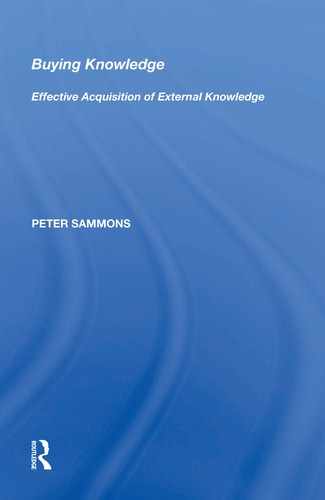Contents
- List of Figures
- List of Tables
- Introduction
- 1 In the Know–The Knowledge Economy in the Twenty-first Century
- 2 Knowledge is Power
- Science and science policy
- Future proof – the need to monitor knowledge
- Knowledge is power: creating and diffusing new knowledge
- Knowledge is power: productivity and economic structure
- Knowledge is power: new entrants in the global knowledge stakes
- Made in Japan: a knowledge economy adjusts to low-cost rivals
- Knowledge is power: towards a strategy for increasing innovation
- 3 Head Knowledge – Modern Intellectual Property Rights
- 4 Intellectual Property Rights: Current Developments
- 5 Why Buy Knowledge?
- 6 Planning to Buy Knowledge
- 7 Knowledge Transfer
- 8 Working with Consultants
- 9 Working with Contract Research Organizations
- 10 Knowledge Factories – Buying Knowledge from Universities
- Appendix 1–The Outsourcing R&D Toolkit
- Appendix 2–Project Memo
- Appendix 3–Watch Your Service Bills!
- Index
..................Content has been hidden....................
You can't read the all page of ebook, please click here login for view all page.
